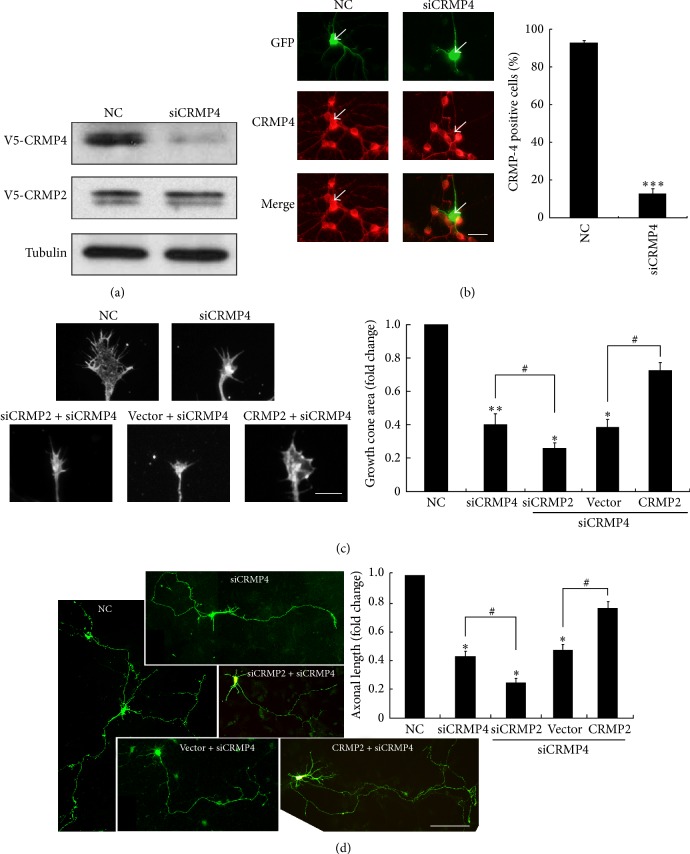Figure 4.
Both CRMP2 and CRMP4 are necessary for growth cone development and axonal elongation, and CRMP2 rescues the inhibitory effect of CRMP4 knockdown. (a) The efficiency of CRMP2 siRNA was measured in HEK293 cells by transfection with a nontargeting siRNA (negative control, NC) or the siCRMP4 fragment together with the CRMP4-V5 plasmid. Cell lysates of HEK293 cells were analyzed using western blotting with the V5 antibody. Tubulin was used as a loading control. (b) Neurons at 1 day in vitro (DIV) were transfected with GFP together with the CRMP4 siRNA fragments or NC. Neurons were stained with anti-GFP (green) and anti-CRMP4 (red). Representative images are shown (left panel). The percentage of CRMP4-positive GFP-transfected neurons (right panel). Mean ± SEM, n = 3; ∗∗∗ P < 0.001 versus NC. (c) Representative images of growth cones from neurons of the indicated transfections. Scale bar: 10 μm. The relative ratio of the growth cone area of transfected cells was measured and is shown in the right panel. Mean ± SEM, n = 3; ∗ P < 0.05 versus NC; # P < 0.05 versus indicated control; ∗∗ P < 0.01 versus NC. (d) Hippocampal neurons were transfected with indicated plasmids or siRNA fragments together with GFP. Neurons were fixed at 4 DIV and stained with a GFP antibody. Axon length was measured as the mean ± SEM from three independent experiments. ∗ P < 0.05 versus NC; # P < 0.05 versus indicated control. Scale bar: 100 μm.

